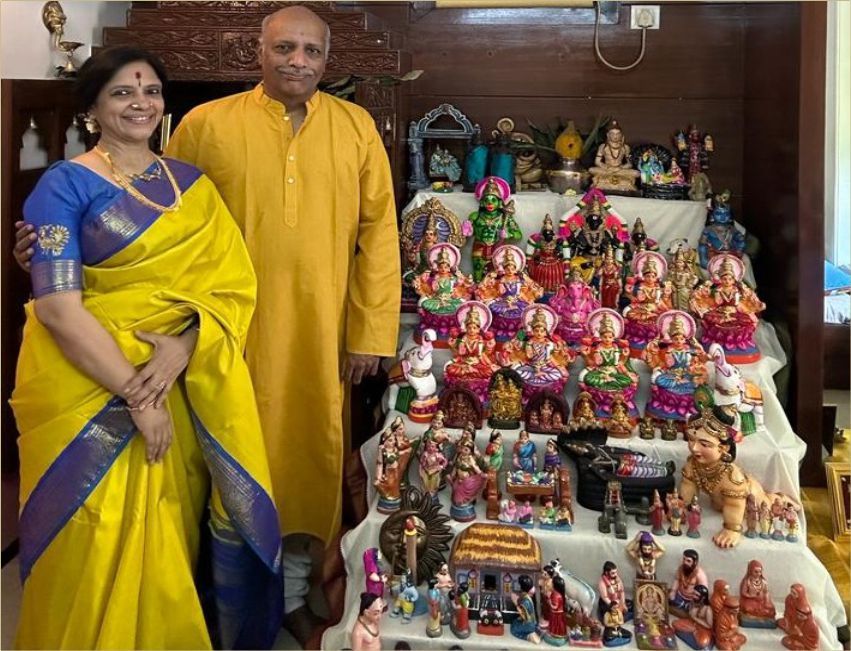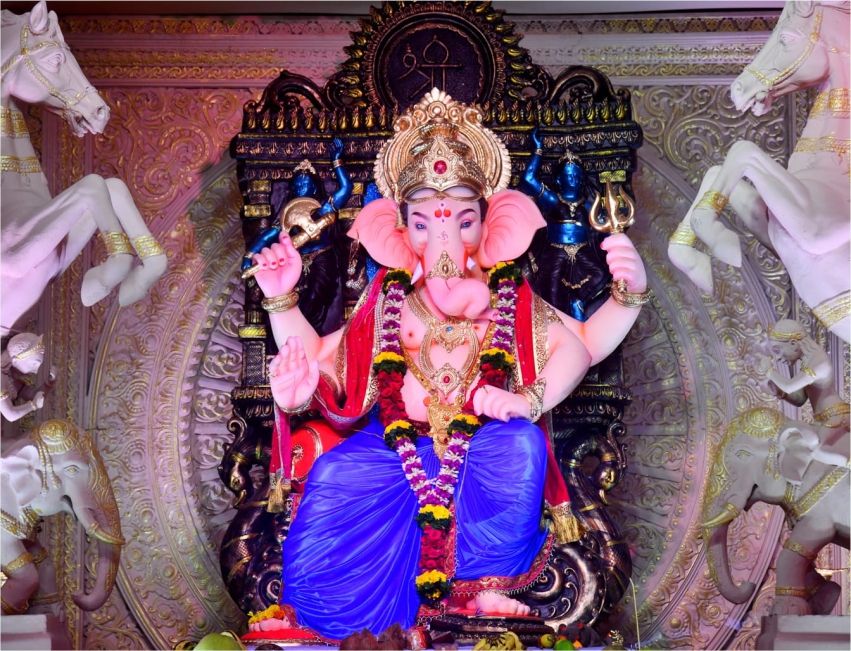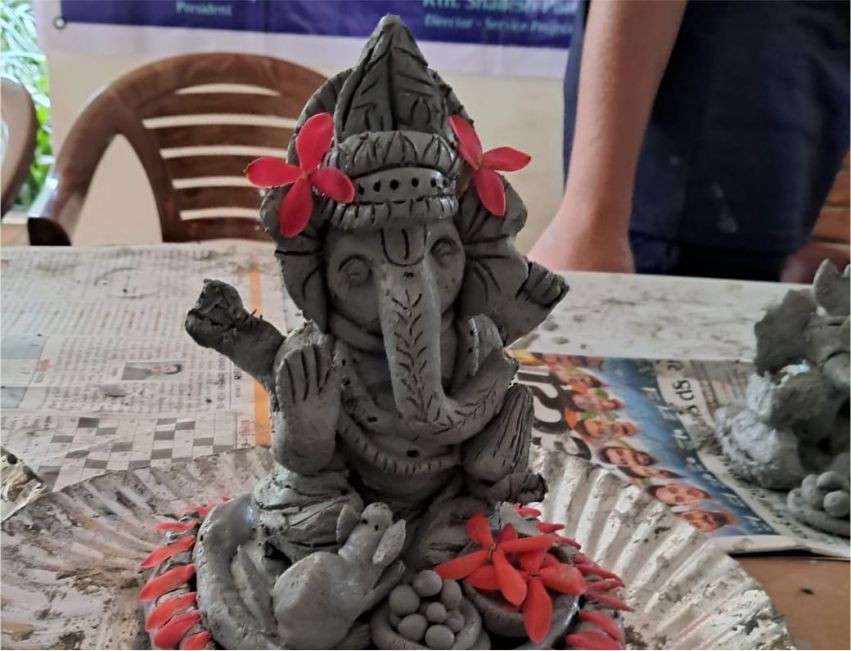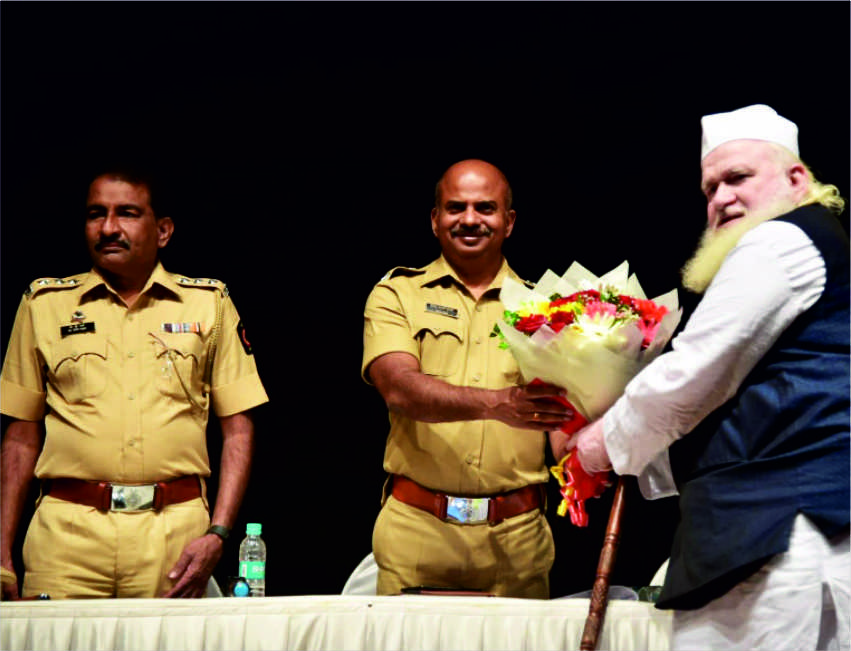Celebrating Navratri the South Indian way with Bommai Golu

- Ashok Dhamija
- 19 Oct, 2023
While Navratri across major part of India is often associated with ritualistic worship of her nine forms venerated through specific attribute or color or through dance form popular known as ras garba including dandiya or Durga Puja, the local populace of Tamil Nadu celebrates it as a ‘nine-day dolls festival’ of Navrathri Bommai Golu (sometimes also called as Kolu Bommai), in which bommai stands for doll, golu or kolu for display and pandigai.
Newsband readers and social workers Kalpana Prakash and her better half Prakash Srinivasan who have been celebrating the ongoing festival of Navaratri as per the traditional South India style with the customary Golu at their residence in Sector 28, Vashi for over three and a half decades, shared their valuable insights on the same. The excerpts of the same is detailed below:
Bharat is truly a delightful country to live in, to exhibit and enjoy the versatile celebrations of festivals rich in traditions and culture with an absolute divine story behind every aspect of the ritual to bring in a feeling of pride and pure divinity. The ongoing festival of Navaratri during the autumn festive season is celebrated in South India with the customary GOLU, arrangement of Bommais (dolls) in a particular order of significance on the auspicious muhurtam time on the Mahalaya Amavasya,that is on the New Moon Day in the Tamil month of Purattasi. Nine steps are kept for the Golu or otherwise 3, 5, 7, steps can be arranged, i.e. in odd numbers only, and more than one and usually not exceeding nine. The popular version of the significance of the nine steps is that they represent the nine heavenly bodies and deities that influence human life on Earth according to Hinduism and Hindu astrology also known as Navagrahas.
Firstly, Navaratri Kalasam is filled with rice, lentils, turmeric stick and coins with mango leaves at the mouth along with wooden figurines of the bride and groom together, called 'Marapacchi Bommai' is placed on the top most step, but again different people follow different customs.
The nine steps for Navarathri Kolu are said to represent the evolution of beings from the 'lower' animal lives to the divine. The dolls are made from clay and spectacularly coloured to give unparalleled vibrancy to the Golu starting with the top most step where the idols of principal deities of Hinduism like Lord Ganesha, Shiva and Lord Vishnu along with Goddess Durga, Lakshmi and Saraswathi are placed near the Kalasam and gradually going down the steps with the incarnation sets of Dashavataram representing the ten primary avatars of Lord Vishnu, Ram Darbar, Krishna, Karthikeya, , and going further down with that of noble saints and navagrahas, great poets, and then to dolls show casing human activity and work, symbolising day to day functioning includes those of musicians, artisans, farmers, temples and devotees, villagers, bands, soldiers, wedding processions, sportspersons, etc. The Chettiar couple (traders) are placed in the centre with fruits and vegetables.
The celebration of Navaratri by way of keeping the Golu is inspiring, enriching and enlightening as it is the passing of the tradition to our future generation as each idol of God has a story which can be beautifully narrated to the younger children to enable them to learn and understand our tradition and culture. India is a country of stories and storytellers and what better opportunity to teach and learn than through the Navaratri Golu!
Special shlokas of the Devis are recited and neivedyam of payasam (milk sweet preparation) is offered to the goddesses daily and In the evenings, women within the neighborhood invite each other to visit their homes to view the golu displays; they also exchange tambulam (Haldi Kumkum), sundal (lentil salt preparation rich in protein), gifts and sweets. A ‘Kuthuvilakku’ oil lamp is lit, in the middle of a decorated kolam (rangoli) and devotional songs are sung and shlokas chanted. The Navaratri festival is devoted to the Devis and celebrated with great enthusiasm by the women.
The significance of freshly prepared sweet milk preparation in the morning and the protein rich salt preparation in the evening speaks volumes about the wisdom of our ancestors to consider the importance of consuming our geographically grown rich and healthy food giving nutrition to stay fit and healthy throughout the 10 days of festive season. It is important to preserve this heritage and carry it forward to the future generations to enjoy and grow spiritually to attain a satisfying life and lifestyle.
The first three days of the festival are dedicated to Goddess Durga, then the next three days dedicated to Goddess Lakshmi and finally, the last three days are dedicated to Goddess Saraswathi as per ancient traditions. On the ninth day, Saraswati Puja, special pujas are offered to the Goddess of Knowledge. Books, musical instruments, tools, business documents, cash and coins of gold and silver are placed in the puja and worshipped as a source of knowledge, wealth and courage.
The 10th day, Vijayadashami, is regarded to be the most auspicious day of all. It is the day Hindus believe the asura Mahishasura was finally destroyed by Goddess Durga. It is regarded to mark a new and prosperous beginning. Later, on the evening of Vijayadashami, one of the dolls from the display is symbolically put to sleep, and the Kalasha is moved a bit towards North to mark the end of the festivity.
Photo Caption Golu: The age old tradition of Navaratri Golu being celebrated by Kalpana Prakash and her better half Prakash Srinivasan residence at Sector 28, Vashi for the last 36 years




